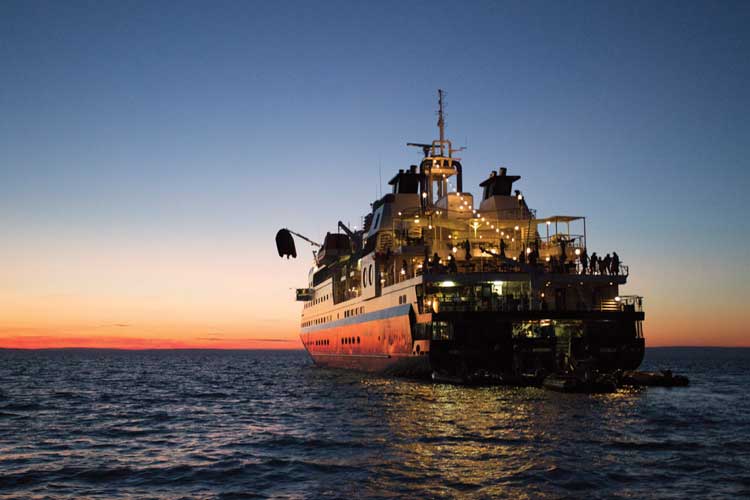Kevin Clement on the Reasons for the Seasons
Posted by Kevin Clement
in Asia & Pacific, Ocean Crossings and Of Interest
Kevin Clement recently crossed the Tropic of Cancer on Apex Expeditions’ voyage from Palau to Japan, which sparked him to delve into the fascinating workings of the seasons, the solstice and the equinox. Enjoy!
Our South Pacific small-ship cruise aboard the Silver Discoverer sailed up the Marianas island chain from Maug to Japan, passing over a line, an interesting threshold, that went almost unremarked…we crossed the Tropic of Cancer.
The Tropic of Cancer and of Capricorn, at about 23.5 degrees north and south of the Equator, are not placed arbitrarily on the map. Nor are they determined by any human agency. Instead, they are a function of the Earth’s movement through the heavens, and its tilt on its axis, relative to the plane of its orbit around the sun…which just happens to be 23.5 degrees.
Because of that tilt, the sun doesn’t follow the same path through the sky all year round. Its track, known as the ecliptic, shifts to the north in the northern summer, and to the south in the northern winter. It passes over the Equator at the equinoxes, in late March and September. On those two magical days of the year, everywhere on earth gets about 12 hours of day and 12 hours of night (the word “equinox” means “equal night”). At noon on the Equator, the sun is straight overhead, and even the tallest building will cast no shadow.
As summer comes to the north, the ecliptic tracks steadily northward, until it reaches the Tropic of Cancer. This it does at the Summer Solstice, the longest day of the year. There it slows, stops, and reverses its apparent direction (“solstice” means “sun stays”). As the days grow shorter in the north, it travels south, crossing the Equator at the equinox, and gets to the Tropic of Capricorn on December 21 or 22, the height of summer in the south. The sun then appears to turn and head back north (“tropic” comes from the Greek verb “to turn”—a phototropic plant is one which turns to follow the sun).
This has a number of important implications. If you live within the Tropics, you live in the path of the sun, and you will have it directly overhead twice a year (once if you are right at one of the Tropics). The sun within this belt is at its strongest, even compared with the regions just outside. The extra solar energy is a major driver of world climate. It also drives biodiversity, which, if you graph it starting from the Poles, suddenly increases right when you cross those lines.
For us, being at the Tropic of Cancer just a couple of days before the Solstice meant that the sun at noon was probably as high as any of us will ever see it, virtually dead center in the sky. Though we had no tall buildings in the vicinity to confirm this.
Crossing the Tropic and continuing north means leaving the biological desert of the tropical oceans for the cooler, more seasonal, more productive waters of the higher latitudes. Already we could see the result in the new seabirds we were picking up today, including rare Matsudaira’s and Tristram’s Storm-Petrels. We are entering the realm of the albatross.
We have crossed the threshold; the Tropics lie behind us; the Temperate Zone now enfolds us; and more adventures lie ahead.
Learn more about Kevin and the interesting expeditions he designs and leads at Travelling with Kevin Clement

